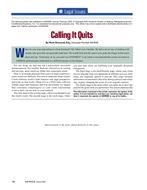Grocery stores and restaurants represent two of the most energy intensive commercial building types. Some stores combine these two building types under one roof creating a challenging combination of space and system types. However, these buildings also represent tremendous opportunities to explore and demonstrate a variety of efficiency measures. The U.S. Department of Energy (DOE) recognized this potential and formed the Commercial Building Partnership (CBP) program to work with select companies in retail and commercial real estate to explore and implement energy savings measures across a large market. The National Renewable Energy Laboratory partnered with Whole Foods Market under the CBP program to design and implement a new store in Raleigh, North Carolina. The result was a design with a predicted energy savings of 40% over ASHRAE Standard 90.1-2004, and 25% energy savings over their standard design. Measured performance of the as-built building showed that the building did not achieve the predicted performance. A detailed review of the project several months after opening revealed several construction and controls items that were not implemented properly and were not fully corrected in the commissioning process. About half of the items were noticed during commissioning, but follow up to correct the problems was very slow. The lessons learned from this project include the efficiency measures put in place and the need for close communications regarding performance between the owner, designers, contractors, and commissioning agent. It is very important that the design intent of the building and each system be clearly documented, communicated, and implemented.
Citation: ASHRAE Conference Papers, Dallas, TX.
Product Details
- Published:
- 2013
- Number of Pages:
- 8
- File Size:
- 1 file , 700 KB
- Product Code(s):
- D-DA-13-C008


